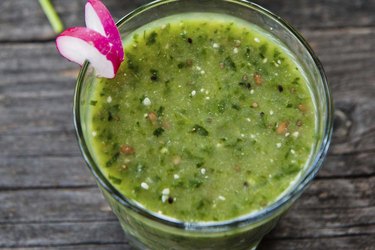
A food can have out-of-this-world health benefits, but that doesn't always mean it tastes good. So stop choking down kale just because that's what you're "supposed" to do. "Force-feeding yourself healthy foods just because everyone is saying it's good for you is not the ideal way to go about healthy eating, says registered dietitian nutritionist Vandana Sheth, a spokesperson for the Academy of Nutrition and Dietetics. "If you don't like a particular 'superfood,' there are usually several other foods that can provide a similar nutritional benefit." And if you like one of those, you'll be way more likely to regularly get those nutrients. Have some superfoods your taste buds just won't tolerate? Check out these 10 easy superfood swaps: We bet you'll find some new favorite health foods.
1. Don’t Like Kale? Eat Any Other Leafy Green
Video of the Day
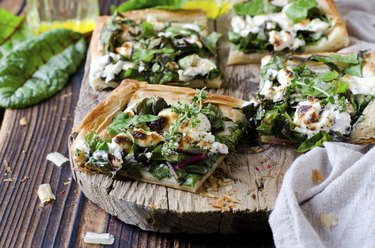
Calcium, fiber, iron, phosphorus, potassium, vitamin A, vitamin B6, vitamin C and vitamin K -- you can get all of kale's powerhouse nutrients from pretty much any other green, says Vandana Sheth, RDN, a spokesperson for the Academy of Nutrition and Dietetics. Some options: spinach, collard greens, broccoli, dandelion greens, bok choy, beet greens, turnip greens, mustard greens and Swiss chard. According to the U.S. Department of Agriculture, eating two to three servings of leafy greens per week can even lower the risk of stomach, breast and skin cancer. And have you tried baby kale? It's more tender than regular kale, and some people prefer its flavor, says Lori Zanini, RD, a nutritionist with HealthCare Partners Medical Group in Southern California.
Video of the Day
Related: 8 Foods to Boost Your Energy
2. Don’t Like Mushrooms? Eat Bananas, Brazil Nuts and Eggs
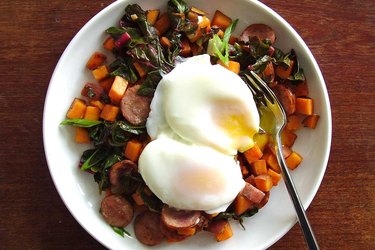
While cauliflower, eggplant, tofu and seitan can all easily sub for mushrooms in your recipes from a culinary perspective, you'll want to opt for other foods to get mushrooms' nutrients. For example, bananas and avocados provide potassium, and Brazil nuts provide selenium, says Vandana Sheth, RDN. To replace mushroom's vitamin D, you'll need to opt for animal products. "Mushrooms are the only source of vitamin D found in the produce aisle," says Kimberly Gomer, M.S., RD, LDN, director of nutrition at the Pritikin Longevity Center. Eggs may be your best animal-based alternative, as they are also packed with mushrooms' choline. An essential vitamin, choline promotes healthy sleep, muscle movement, learning and memory and reduces chronic inflammation, says nutritionist Lori Zanini, RD. For other plant-based vitamin D options, milk alternatives and some cereals are fortified with this nutrient.
Related: The 20 Best Ways to Use Eggs
3. Don’t Like Beets? Eat Spinach, Cabbage, Carrots, Celery and Chard
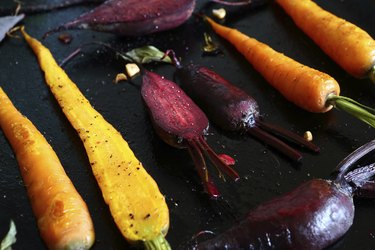
There's a reason runners love beets: They're filled with nitrates, which dilate blood vessels for increased blood flow, says nutritionist Lori Zanini, RD. Apart from improving your sports performance, according to a 2014 study published in Hypertension, nitrate-rich foods can lower your blood pressure, improve your blood vessel function and reduce arterial stiffness, all of which can lower your risk of heart disease. Cabbage, carrots, celery and chard are all packed with blood-pressure-lowering nitrates. Plus, both beets and chard are rich in betalains, phytonutrients with antioxidant and anti-inflammatory properties, Zanini says.
Related: The 9 Best Post-Workout Foods
4. Don’t Like Asparagus? Eat Green Beans
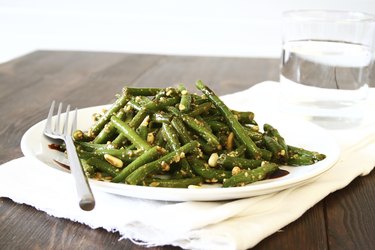
"Green beans are a close substitute. Both asparagus and green beans are rich in calcium, dietary fiber, iron, manganese, magnesium, potassium, riboflavin, thiamin and vitamins A and C," says Kimberly Gomer, M.S., RD, LDN. Plus, they are high in folic acid, which helps your body produce and maintain new cells, prevents DNA mutations that may lead to cancer and, according to a 2015 study of 20,000 adults with high blood pressure in the Journal of the American Medical Association, slashes the risk of stroke. Bonus: Your urine won't smell after eating them.
5. Don’t Like Beans? Eat Lentils and Peas
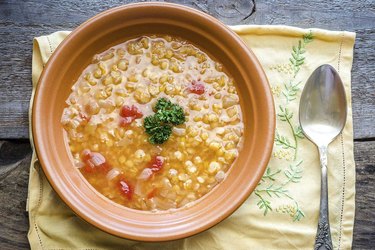
If you don't like one type of bean, consider trying another. All beans -- pinto, lima, black, white, kidney -- are full of protein, fiber and have zero saturated fat, says Kimberly Gomer, M.S., RD, LDN. Not a fan of any type of beans? Try eating lentils for a similar nutritional profile, she recommends. In one 2014 Canadian Medical Association Journal study, people who ate one serving a day of beans or lentils reduced their bad cholesterol levels and cardiovascular disease risk by five percent. Their low glycemic index and tendency to displace saturated and trans fats are factors that might play a part in this.
6. Don’t Like Brussels Sprouts? Eat Cabbage, Broccoli and Cauliflower
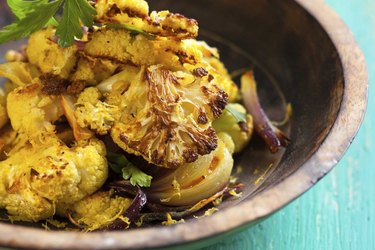
Can't get past the smell of Brussels sprouts? Try swapping out the little green guys for another cruciferous vegetable like broccoli, cauliflower or cabbage. All are loaded with vitamin C and vitamin K and also provide a healthy dose of folate, potassium, manganese and vitamins A and B6, says Vandana Sheth, RDN, a spokesperson for the Academy of Nutrition and Dietetics. Meanwhile, the sulfur-containing compounds in these veggies may alter gene expression to prevent disease, according to a 2012 Frontiers in Genetics study.
Related: 18 Most Nutritious Vegetables
7. Don’t Like Nuts? Eat Seeds, Beans and Lentils
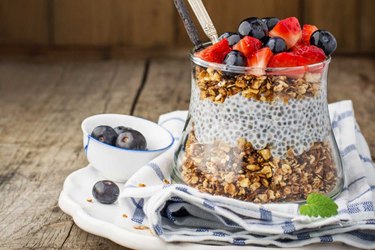
Not a fan of nuts? Or maybe you're allergic? Luckily, you can get their heart-healthy fats, fiber, vitamins and minerals from seeds, says Vandana Sheth, RDN. Flaxseed, chia, pumpkin, sunflower and hemp seeds are all great options. If you're trying to match nuts' nutritional profile, however, sunflower seeds do have a leg up on the competition: They are jam-packed with almonds' vitamin E, an antioxidant that's linked to healthier aging, stronger immune systems and improved cardiovascular health. One ounce of sunflower seeds (about two tablespoons) contains half of your days vitamin E needs. Overall, you want to eat a variety of seeds, just as you'd want to eat a variety of nuts to benefit from their different nutritional offerings.
Related: 13 Types of Nut and Seed Butters
8. Don’t Like Oatmeal? Eat Other Whole Grains
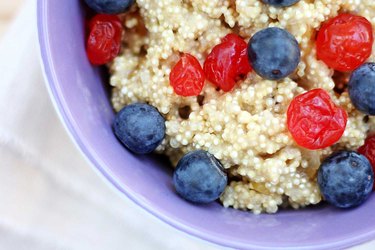
Oatmeal has been shown to improve heart health, fight some types of cancer, help control blood sugar levels and aid in weight loss -- and the list goes on. But other whole grains can too, says Vandana Sheth, RDN, a spokesperson for the Academy of Nutrition and Dietetics. Try quinoa, buckwheat, wheat berries, barley and amaranth. Never tried amaranth? Now's the time. It's teeming with calcium, potassium and iron and contains even more protein than quinoa. Plus, it contains lysine, an important amino acid for muscle growth that's missing from most grains.
Related: 13 Powerful Grains and Seeds
9. Don’t Like Avocado? Eat Healthy Oils, Nuts and Seeds
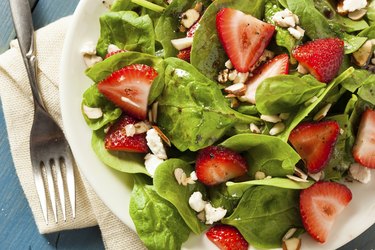
Get your monounsaturated fats from olive oil, canola oil, peanut oil, peanut butter and other nuts and seeds, recommends dietician nutritionist Vandana Sheth, RDN, spokesperson for the Academy of Nutrition and Dietetics. Plus, most of those foods also pack avocados' vitamin E and protein -- and nuts in particular may help you live longer, she says. For instance, a 2013 study in the New England Journal of Medicine found that people who ate a handful of nuts every day for 30 years were 20 percent less likely to die from any cause. That includes heart disease, diabetes and cancer.
Related: 18 Fat-Rich Foods That Are Good for You
10. Don’t Like Fish? Eat Walnuts, Chia Seeds and Flaxseed
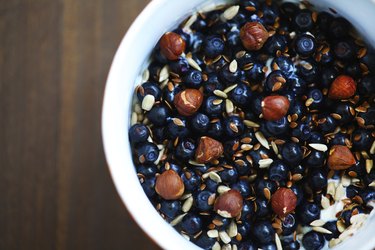
Fish are known for their protein and heart-healthy omega-3s, but if your stomach churns at the thought of eating fish or you follow a vegetarian or vegan lifestyle, you can get the power combo elsewhere. Start with a handful of walnuts, suggests Vandana Sheth, RDN. While all nuts pack some healthy fats, 14 walnut halves contain 4.3 grams of protein and 15.5 grams of unsaturated fat (more than a three-ounce serving of salmon!), 2.5 grams of which are alpha-linoleic acid (ALA), a plant-based omega-3. That's more than any other nut. Meanwhile, both chia seeds and flaxseed are teeming with fiber, omega-3s and protein. If you opt for flaxseed, though, first grind them up in a spice grinder or food processor. It'll help you absorb all of their nutrients, says Kimberly Gomer M.S., RD, LDN, director of nutrition at the Pritikin Longevity Center. The plant-based omega-3s aren't absorbed as efficiently as the type found in fish, so make sure to include these nuts and seeds regularly.
Some adults simply don't like certain foods, while others are so averse to eating new things that they are considered to have a condition called selective eating disorder. Most picky eaters will simple refuse to eat new foods, so you must be flexible when cooking for these people. Combine a variety of fruits and vegetables with the foods the picky folks like so everyone can enjoy the meal.
Potatoes
Many picky eaters gravitate toward bland foods, so potato dishes will be a hit. Sneak some healthier vegetables into the meal by mashing cooked cauliflower and mixing it into a bowl of mashed potatoes. When everything's mixed together, the picky eater may not even realize he's eating vegetables. If he likes to eat French fries at every meal, make them healthier by slicing up sweet potatoes. Sprinkle them with olive oil and salt and bake them until they're crispy.
Tacos and Fajitas
Tacos and fajitas are ideal when you're serving a crowd of picky eaters, since everyone can pick and choose the ingredients they want to eat. Start with whole-wheat tortillas, which contain more fiber than plain white tortillas. Saute lean chicken and cut the pieces into slices. Serve low-fat refried beans for protein, saute some peppers and onions and set out bowls of chopped lettuce and tomato and a small bowl of low-fat shredded cheese.
Soup
You can hide vegetables and healthy protein in a big bowl of soup. Picky eaters may pick chunks of vegetables out of their food, but blended soups make this impossible. Make broccoli soup and use a hand blender to eliminate any chunks of broccoli. Scatter a handful of shredded cheddar on top of the pot. Tomato soup is another creamy soup that can be made healthfully. Blend roasted red peppers into the soup and use a base of low-fat milk thickened with flour rather than cream. If your picky eater doesn't mind chunks of vegetables, make a batch of minestrone soup topped with shaved Parmesan cheese.
Pasta
Bland noodles will be a hit with many picky eaters, and with the variety of whole-wheat pastas available today, you can conveniently make a healthy meal that everyone will love. To make a healthy version of spaghetti and meatballs, blend diced red peppers and zucchini into turkey meatball mix to add extra nutrients to the protein. Jarred sauce is packed with sugar, so make your own by sauteing diced tomatoes and a little tomato paste with olive oil, garlic and onion. If your picky eater is willing to try pesto, try blending cooked broccoli into the sauce to give it an extra boost of vegetables.